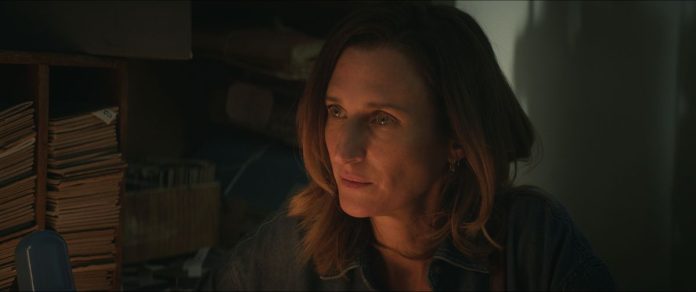The Armenian-French filmmaker Tamara Stepanyan has built a body of work in documentary cinema centered on memory, exile, and identity. Through intimate films such as Embers (2012), a tribute to her grandmother and resilience in post-war Armenia, Those from the Shore (2017), following dozens of Armenian asylum seekers living in limbo between two countries and two lives in the port of Marseille, and Village of Women (2019), which portrays rural communities marked by the absence of men and highlights the quiet strength of women, Stepanyan has established a precise and powerful cinematic signature. And we cannot forget My Armenian Phantoms (2025), premiered this year at Berlinale, where the death of her father, actor Vigen Stepanyan, triggers a journey through family archives and the history of Soviet Armenian cinema.
Weaving together the personal and the collective once again, giving voice to forgotten histories and celebrating the resilience of Armenian identity across time, Stepanyan makes her fiction debut with In the Land of Arto (Le Pays d’Arto), the opening film of the 2025 Locarno Film Festival.
Another emotional and political dive into the heart of Armenia, the film unfolds through stories of loss, beginning with Céline, a French woman played by Camille Cottin, who travels to Armenia after the sudden death of her husband, Arto. Her goal is to find his birth certificate, as they have two children together. What starts as a private journey of grief gradually becomes a confrontation with the truth about her husband’s life—a truth inextricably linked to a nation marked by conflict (in Karabakh), natural disasters, and waves of forced displacement.
Stepanyan channels the ethics of her documentary gaze into fiction, taking us on a journey of painful discoveries—through people, places, and silent wars. The film gradually transforms into a politically charged road movie when Céline and a young woman she meets (Zar Amir Ebrahimi) set off toward Karabakh to visit the second woman’s father.
Céline’s grief for her husband quickly merges with the collective mourning of a nation—first due to the 1988 earthquake, whose scars remain visible to this day, then by the loss of territory to Azerbaijan. The sense that their cause has been rendered futile weakens the Armenian spirit, and in Céline’s husband’s case, it ultimately drove him to take his own life. Arto’s death thus transcends the personal, becoming a political act.
With a stunning visual contribution from cinematographer Claire Mathon (Portrait of a Lady on Fire), the screenplay risks some imbalances—particularly when Céline’s visit to an earthquake-affected town, and the lack of answers about her husband’s truth, leave both character and viewer drifting in a void. A final scene with Denis Lavant feels disjointed and poorly integrated into the film’s emotional economy. Yet, despite these flaws and as a first foray into fiction, In the Land of Arto radiates a rare blend of poetic depth and political urgency in its portrayal of suffocating grief and a brutal game of loss—both individual and collective.
Camille Cottin, who was recently confronted in Out of Love (2025) with a reinforced sense of mission driven by motherhood and imposed responsibility, once again delivers a performance marked by emotional restraint, expressed primarily through gestures and silence. Once more, in a completely different context yet echoing Nathan Ambrosioni’s film, the actress embodies someone without a plan or map after a transformative event.
Compelled to learn as she goes, discovering her own ignorance as she uncovers her husband’s secrets, Cottin performs with estrangement and resolve. She shows that there is no healing without confrontation—and that when you stare into the abyss, and it stares back, what remains is the truth.


